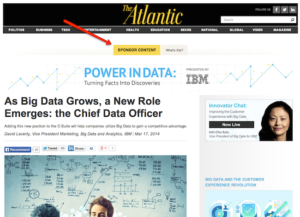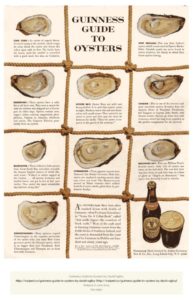Have you ever found yourself reading an article in a magazine, only to realize that it was actually an advertisement? This is known as native advertising, which is a paid ad that is usually information based and seamlessly blends in with the medium’s surrounding content. It can be found not only in print, but on digital formats as well. Native advertising is one of the oldest trends in marketing and is making its way back as a popular strategy with estimates that spending on this form of advertising is projected to reach $21 billion by 2018, in the United States.
But how is native advertising more effective than traditional advertising? Where traditional advertising usually presents a product or service, native advertising provides the consumer with information. According to Rob Lutz, CEO of Cleriti and Advent Media Group, “While people may (or may not) take notice of a direct advertisement, they actually stop and read or watch native ads because they become part of the process of searching for relevant information.” The idea that the consumer can learn about something before making a decision is what makes native ads more engaging and results in better recall. Native ads are also less disruptive to the consumer’s current experience. With consumers making a conscious effort to avoid advertisements, native advertising provides a covert and effectual way of getting consumers’ attention.
So why should brands consider this form of marketing? Native advertising provides a way for brands to reach a very targeted audience, as well as “diversify their media mix.” With the increased opportunities for native ads on popular websites like Buzzfeed and Forbes, and reputable news outlets like The New York Times, The Wall Street Journal and The Atlantic, brands are also able to connect with their target audience, as well as a new audience, in various environments.
So now the question is, do you think more brands will adopt native advertising? Why?
DeMers, Jayson. (2016, November 14). 7 online marketing trends that will dominate 2017. Retrieved from http://www.forbes.com/sites/jaysondemers/2016/11/14/7-online-marketing-trends-that-will-dominate-2017/#70865aaddec8
Farnworth, D. (2014, April 14). 12 examples of native ads (and why they work). Retrieved from http://www.copyblogger.com/examples-of-native-ads/
Lutz, R. (2015, September 26). Native ads and the human brain: When science and advertising collide. Retrieved from https://www.adventmediagroup.com/blog/native-ads-and-the-human-brain-when-science-and-advertising-collide
Walters, T. (2016, January 19). Native advertising: Fad or new go-to standard? [new research]. Retrieved from http://contentmarketinginstitute.com/2016/01/native-advertising-research/



6 Responses to Native Advertising is Making a Comeback